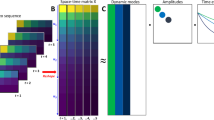Abstract
Fluorescence microscopy is an important investigation tool for discoveries in the field of biological sciences. In this paper, we propose an adaptive thresholding technique-based improved empirical mode decomposition (IEMD) for denoising of heavily degraded images labeled with Fluorescent proteins. These images are widely used by a computational biologists to analyze the biological functions of different species. A variance stabilization transformation is applied as preprocessing step. The multi-scale Wiener filtering approach is used as the first step for accurate image deconvolution. In the subsequent steps, IEMD is performed to obtain different series of intrinsic mode functions (IMFs) which are further separated into noise and signal-significant IMFs based on Cosine similarity index. The IMF adaptive thresholding technique is used which filter-out the unwanted frequency coefficients related to mixed Poisson–Gaussian noise (MPG). The thresholded output IMFs are combined with signal significant IMFs in the third step. Finally, the mean square deviation (MSD) is minimized using mixed Poisson–Gaussian unbiased risk estimate (MPGURE). To evaluate the effectiveness of the proposed scheme, we have compared the results of the proposed scheme with those of the five state-of-the-art techniques. The simulation results validate, the effectiveness of the proposed method. The proposed algorithm achieves better performance in terms of four quantitative evaluation measures by reducing the effect of noise.




Similar content being viewed by others
References
Michalet, X., Pinaud, F., Bentolila, L., Tsay, J., Doose, S., Li, J., Sundaresan, G., Wu, A., Gambhir, S., Weiss, S.: Quantum dots for live cells, in vivo imaging, and diagnostics. Science 307, 538–544 (2005)
Belmont, A.S.: Visualizing chromosome dynamics with GFP. Trends Cell Biol. 11, 250–257 (2001)
Miyawaki, A., Sawano, A., Kogure, T.: Lighting up cells Labelling proteins with fluorophores. Nat. Cell Biol. 5, 1–7 (2003)
Meiniel, W., Olivo-Marin, J.C., Angelini, E.D.: Denoising of microscopy images: a review of the state-of-the-art, and a new sparsity based method. IEEE Trans. Image Process. 27, 3842–3856 (2018)
Rasal, T., Veerakumar, T., Subudhi, B.N., Esakkirajan, S.: Mixed Poisson Gaussian noise reduction in fluorescence microscopy images using modified structure of wavelet transform. IET Image Proc. 15, 1383–1398 (2021)
Louchet C., Moisan L.: Total variation denoising using iterated conditional expectation. In: Proceedings of IEEE Signal Processing, pp. 1592–1596 (2014)
Posterior expectation of the total variation model: Louchet, Moisan, L.: Posterior expectation of the total variation model: properties and experiments. SIAM J. Imaging Sci. 6, 2640–2684 (2013)
Sawatzky A., Brune C., Muller J., Burger M.: Total variation processing of images with Poisson statistics. In: Proceedings of Computer Analysis of Images and Patterns, pp. 533–540 (2009)
Vonesch, C., Unser, M.: A fast thresholded landweber algorithm for wavelet-regularized multidimensional deconvolution. IEEE Trans. Image Process. 17, 539–549 (2008)
Salmon, J., Harmany, Z., Deledalle, C.-A., Willett, R.: Poisson noise reduction with non-local PCA. J. Math. Imaging Vis. 48, 279–294 (2014)
Ikoma, H., Broxton, M., Kudo, T., Wetzstein, G.: A convex 3D deconvolution algorithm for low photon count Fluorescence imaging. Sci. Rep. 8, 11489 (2018)
Zhang, B., Fadili, J.M., Starck, J.L.: Wavelets, ridgelets, and curvelets for Poisson noise removal. IEEE Trans. Image Process. 17, 1093–1108 (2008)
Kopsinis, Y., McLaughlin, S.: Development of EMD-based denoising methods. IEEE Trans. Signal Process. 57, 1351–1362 (2009)
Le Montagner, Y., Angelini, E.D., Olivo-Marin, J.C.: An unbiased risk estimator for image denoising in the presence of mixed Poisson-Gaussian noise. IEEE Trans. Image Process. 23, 1255–1268 (2014)
Li, J., Luisier, F., Blu, T.: PURE-LET image deconvolution. IEEE Trans. Image Process. 27, 92–105 (2018)
Harmany, Z.T., Marcia, R.F., Willett, R.M.: This is SPIRALTAP: sparse Poisson intensity reconstruction algorithms theory and practice. IEEE Trans. Image Process. 21, 1084–1096 (2011)
Abergel R., Louchet C., Moisan L., Zeng T.: Total variation restoration of images corrupted by Poisson noise with iterated conditional expectations. In: Proceedings of SSVM in Computer Vision, pp. 178–190 (2015)
Bindilatti, A.A., Vieira, M.A., Mascarenhas, N.D.: Poisson Wiener filtering with non-local weighted parameter estimation using stochastic distances. Signal Process. 144, 68–76 (2018)
Riffle, M., Davis, T.N.: The Yeast resource center public image repository: a large database of fluorescence microscopy images. BMC Bioinform. 11, 263–263 (2010)
Maska M., Ulman.: A benchmark for comparison of cell tracking algorithms. Bioinformatics 30, 1609–1617 (2014)
Yung, H.W., Chien, H.Y., Hsu, W.V.Y., Kun, H., Men, T.L.: On the computational complexity of the empirical mode decomposition algorithm. Physica A 400, 159–167 (2014)
Author information
Authors and Affiliations
Corresponding author
Additional information
Publisher's Note
Springer Nature remains neutral with regard to jurisdictional claims in published maps and institutional affiliations.
Rights and permissions
About this article
Cite this article
Rasal, T., Veerakumar, T., Subudhi, B.N. et al. Fluorescence microscopy image noise reduction using IEMD-based adaptive thresholding approach. SIViP 17, 237–245 (2023). https://doi.org/10.1007/s11760-022-02226-y
Received:
Revised:
Accepted:
Published:
Issue Date:
DOI: https://doi.org/10.1007/s11760-022-02226-y




